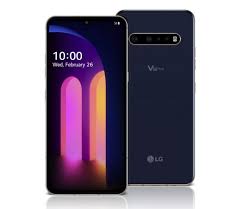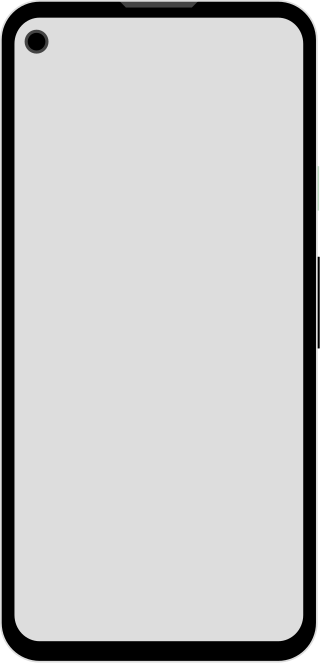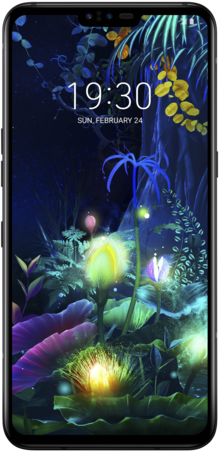
The Samsung Galaxy S series is a line of Android-based smartphones and tablet computers produced by Samsung Electronics. In conjunction with the foldable Galaxy Z series, the series serves as Samsung's flagship smartphone lineup, and is the high-end line of the wider Samsung Galaxy family of Android devices.
Google Pixel is a brand of portable consumer electronic devices developed by Google that run either ChromeOS or the Pixel version of the Android operating system. The main line of Pixel products consists of Android-powered smartphones, which have been produced since October 2016 as the replacement of the older Nexus, and of which the Pixel 9, Pixel 9 Pro and Pixel 9 Pro XL are the current models. The Pixel brand also includes laptop and tablet computers, as well as several accessories, and was originally introduced in February 2013 with the Chromebook Pixel.

The Samsung Galaxy Note is a discontinued line of high-end flagship Android phablets and smartphones developed and marketed by Samsung Electronics. The line was primarily oriented towards pen computing; all Galaxy Note models shipped with a stylus pen, called the S Pen, and incorporate a pressure-sensitive Wacom digitizer. All Galaxy Note models also include software features that are oriented towards the stylus and the devices' large screens, such as note-taking, digital scrapbooking apps, tooltips, and split-screen multitasking. The line served as Samsung's flagship smartphone model, positioned above the Galaxy S series, and was part of the wider Samsung Galaxy series of Android computing devices.
The LG V series was a line of high-end Android devices produced by LG Electronics. This series is slated above the LG G series. The first phone in the V series, the LG V10, was unveiled in September 2015, the first smartphone to have the multiples of 10. The last in the series is the LG V60 ThinQ released in March 2020.

The LG V40 ThinQ, commonly referred to as the LG V40, is an Android phone manufactured by LG Electronics as part of the LG V series. It was announced on October 3, 2018 and is the successor to the previous devices in the LG V series, namely the LG V30, LG V30S ThinQ, and LG V35 ThinQ. The LG V40 released primarily in the United States on October 18, 2018.

The Samsung Galaxy Fold is an Android-based foldable smartphone developed by Samsung Electronics. Unveiled on February 20, 2019, it was released on September 6, 2019, in South Korea. The device is capable of being folded open to expose a 7.3-inch tablet-sized flexible display, while its front contains a smaller "cover" display, intended for accessing the device without opening it. With the announcement of the Galaxy Z Flip, Samsung's foldable phones were made part of the Galaxy Z series. This also retroactively applies to the Galaxy Fold.

The LG G8 ThinQ is an Android smartphone developed by LG Electronics as part of the LG G series. It was officially announced on February 24, 2019. The device serves as the successor to the 2018 LG G7 ThinQ 4G.
The Samsung Galaxy Note 10 is a line of Android-based phablets developed, produced, and marketed by Samsung Electronics as part of the Samsung Galaxy Note series. They were unveiled on 7 August 2019, as the successors to the Samsung Galaxy Note 9. Details about the phablets were widely leaked in the months leading up to the phablets' announcement.

The Xiaomi Mi MIX Alpha is an Android-based smartphone designed by Xiaomi. Xiaomi describes it as a concept phone, but planned on bringing it into small-scale production. It was scheduled to be released in December 2019, but has been cancelled due to manufacturing complexities.
The OnePlus 7T and 7T Pro are Android-based smartphones manufactured by OnePlus. The 7T was unveiled on 26 September 2019, and the 7T Pro was unveiled on 10 October 2019. The McLaren edition from the 6T returns on the 7T Pro. Both have minor upgrades as with previous T phones, such as new software, upgraded cameras and a faster chipset.
The 2019Motorola Razr is an Android foldable smartphone produced by Motorola Mobility. Unveiled on November 14, 2019, it was released on February 6, 2020. The device is designed to be reminiscent of the original Motorola Razr feature phone series and features a horizontally foldable screen. An updated version of the phone, Motorola Razr 5G, was announced on September 9, 2020, and released on September 15 of that year.

The LG V60 ThinQ 5G, commonly referred to as the LG V60, is an Android phablet manufactured by LG Electronics as part of the LG V series. It was announced in February 2020 and is the successor to the LG V50 ThinQ. On April 5, 2021, LG announced it would be shutting down its mobile phone division and ceasing production of all remaining devices. LG noted the phone would be available until existing inventory ran out.

The LG Velvet is an Android phablet manufactured by LG Electronics, announced in May 2020 as a rebrand for the LG G series. The device shares some of its hardware with the flagship V60 ThinQ, with the same display, but a smaller battery and different cameras. On April 5, 2021, LG announced it would be shutting down its mobile phone division and ceasing production of all remaining devices. LG noted the phone would be available until existing inventory ran out.

The Samsung Galaxy Note 20 and Galaxy Note 20 Ultra are a series of high-end Android-based phablets developed, produced, and marketed by Samsung Electronics as part of their Samsung Galaxy Note series, succeeding the Samsung Galaxy Note 10 series. The phablets were announced on 5 August 2020 alongside the Samsung Galaxy Z Fold 2, Galaxy Watch 3, Galaxy Buds Live and Samsung Galaxy Tab S7 during Samsung's Unpacked Event. It was the final model in the Galaxy Note series, with Samsung beginning to integrate the functionality from the Note series into its S series "Ultra" models, starting with the Galaxy S22 Ultra released in February 2022.

The Sony Xperia 5 II is an Android smartphone marketed and manufactured by Sony Mobile. Part of Sony's flagship Xperia series, the phone was announced on September 17, 2020. A less expensive and more compact variant of the Xperia 1 II, the Xperia 5 II belongs to Sony's handset lineup of 2020, which includes the flagship Xperia 1 II and the entry-level Xperia 10 II. The phone was released worldwide in October 2020.

The Pixel 5 is an Android smartphone designed, developed, and marketed by Google as part of the Google Pixel product line. It serves as the successor to the Pixel 4. It was officially announced on September 30, 2020 at the "Launch Night In" event alongside the Pixel 4a (5G) and released in the United States on October 29, 2020. It is the first flagship smartphone in the Pixel lineup not to feature an XL version. On October 19, 2021, it was succeeded by the Pixel 6 and Pixel 6 Pro.
The OnePlus Nord 2 5G is an Android-based smartphone manufactured by OnePlus, unveiled on 22 July 2021. It succeeds the original Nord, and is the sixth device in the Nord series.

The Pixel 5a, also known as the Pixel 5a with 5G, is an Android smartphone designed, developed, and marketed by Google as part of the Google Pixel product line. It serves as a mid-range variant of the Pixel 5. It was officially announced on August 17, 2021 via a press release and released on August 26.
The iQOO 3 is an Android-based smartphone designed, developed and marketed by Vivo owned iQOO as a part of its iQOO gaming smartphone series. This phone was announced on February 25, 2019. The iQOO 3 was introduced as a premium segment smartphone with a special focus on gaming.









